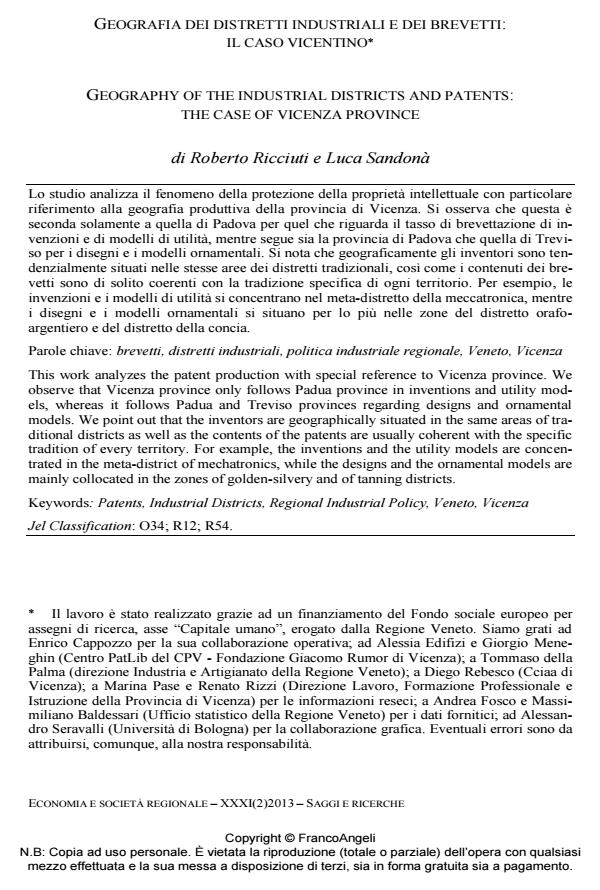Geografia dei distretti industriali e dei brevetti: il caso vicentino
Titolo Rivista ECONOMIA E SOCIETÀ REGIONALE
Autori/Curatori Roberto Ricciuti, Luca Sandonà
Anno di pubblicazione 2013 Fascicolo 2013/2
Lingua Italiano Numero pagine 20 P. 181-200 Dimensione file 1002 KB
DOI 10.3280/ES2013-002009
Il DOI è il codice a barre della proprietà intellettuale: per saperne di più
clicca qui
Qui sotto puoi vedere in anteprima la prima pagina di questo articolo.
Se questo articolo ti interessa, lo puoi acquistare (e scaricare in formato pdf) seguendo le facili indicazioni per acquistare il download credit. Acquista Download Credits per scaricare questo Articolo in formato PDF

FrancoAngeli è membro della Publishers International Linking Association, Inc (PILA)associazione indipendente e non profit per facilitare (attraverso i servizi tecnologici implementati da CrossRef.org) l’accesso degli studiosi ai contenuti digitali nelle pubblicazioni professionali e scientifiche
Lo studio analizza il fenomeno della protezione della proprietà intellettuale con particolare riferimento alla geografia produttiva della provincia di Vicenza. Si osserva che questa è seconda solamente a quella di Padova per quel che riguarda il tasso di brevettazione di invenzioni e di modelli di utilità, mentre segue sia la provincia di Padova che quella di Treviso per i disegni e i modelli ornamentali. Si nota che geograficamente gli inventori sono tendenzialmente situati nelle stesse aree dei distretti tradizionali, così come i contenuti dei brevetti sono di solito coerenti con la tradizione specifica di ogni territorio. Per esempio, le invenzioni e i modelli di utilità si concentrano nel meta-distretto della meccatronica, mentre i disegni e i modelli ornamentali si situano per lo più nelle zone del distretto orafoargentiero e del distretto della concia.
Parole chiave:Brevetti, distretti industriali, politica industriale regionale, Veneto, Vicenza
- Landmarks for Spatial Development David Celetti, Larissa Bozhko, Raf Avetisyan, pp.169 (ISBN:978-3-031-37348-0)
- Italian industrial districts: influence of the governance on performance and financial distress of firms. An explorative study Patrizia Pastore, Silvia Tommaso, in Corporate Ownership and Control /2013 pp.962
DOI: 10.22495/cocv11i1c11p7
Roberto Ricciuti, Luca Sandonà, Geografia dei distretti industriali e dei brevetti: il caso vicentino in "ECONOMIA E SOCIETÀ REGIONALE " 2/2013, pp 181-200, DOI: 10.3280/ES2013-002009